|
Printables |
PowerPoints |
Online exercises |
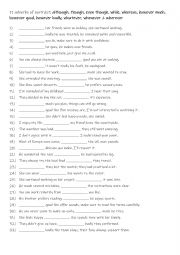
|
B1+ -C1 11 adverbs of contrast although, though, even though, while, whereas, however much, however good, however badly, whatever, whenever & wherever
Learning adverbs of contrast is essential for expressing nuanced ideas and showing the relationship between opposing thoughts or actions. They allow students to introduce exceptions, concessions, and unexpected outcomes, enriching both written and spoken communication. Mastering these adverbs also helps in constructing complex sentences that reflec...
Level: intermediate
Age: 9-100
Type:
Downloads: 125
|
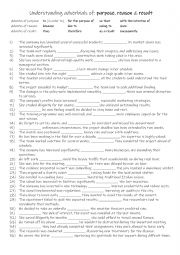
|
B1+ -C1 Understanding 12 adverbials of purpose, reason & result 1
Learning to use adverbials of purpose, reason, and result enhances clarity and coherence in communication. These adverbials allow students to express intentions, causes, and outcomes clearly, making their speech and writing more logical and well-structured. Mastering these adverbials also helps them link ideas smoothly, providing a stronger flow i...
Level: intermediate
Age: 9-100
Type:
Downloads: 105
|
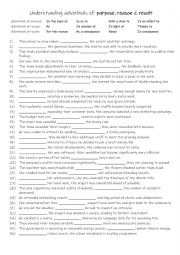
|
B1+ -C1 Understanding 12 adverbials of purpose, reason & result Part 2
This is part 2 of Learning to use adverbials of purpose, reason, and result enhances clarity and coherence in communication. These adverbials allow students to express intentions, causes, and outcomes clearly, making their speech and writing more logical and well-structured. Mastering these adverbials also helps them link ideas smoothly, providing ...
Level: intermediate
Age: 9-100
Type:
Downloads: 114
|
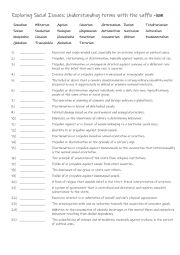
|
B1+ C1 Exploring Social Issues Understanding terms with the suffix -ism
Many "-isms" represent specific ideologies or belief systems (e.g., capitalism, socialism, feminism). Learning about these terms helps you understand the principles and ideas behind these ideologies, which are often significant in political, social, and philosophical discussions.Learning about "-isms" can broaden your intellectual horizons and deep...
Level: advanced
Age: 15-100
Type: worksheet
Downloads: 123
|
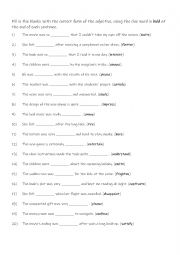
|
B1+ Complete the sentences with the correct form of the adjective -ed or -ing, using the verb form provided in bold font as a clue.
Using the correct form helps ensure that your message is understood as intended. Misusing these forms can lead to confusion or misinterpretation.Native speakers intuitively use these forms correctly, and learning them helps non-native speakers sound more natural and fluent. It�s a step toward mastering nuances in the language.Students fill in the b...
Level: intermediate
Age: 10-100
Type:
Downloads: 124
|
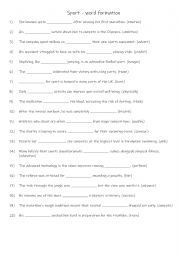
|
B1+ Sport - word formation
Understanding word formation allows students to expand their vocabulary, enabling them to express themselves more precisely and creatively. Knowing how to manipulate words helps them create varied sentence structures, making their writing more engaging and dynamic. Mastering word formation is key to achieving higher levels of language proficiency, ...
Level: intermediate
Age: 9-100
Type:
Downloads: 129
|
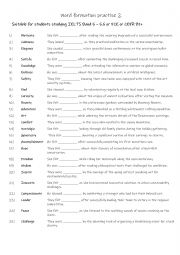
|
B1+ Word formation practise 2
Understanding word formation rules helps students build their vocabulary more effectively. By recognising prefixes, suffixes, and root words, students can decipher the meanings of unfamiliar words they encounter in texts or conversations.Suitable for students studying IELTS Band 5 � 5.5 or FCE or CEFR B1+.Answers on page 2.
Level: intermediate
Age: 12-100
Type:
Downloads: 107
|
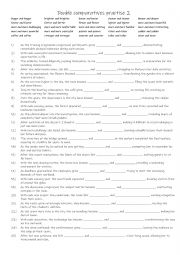
|
B1+-B2 25 Double comparatives Part 2
Double comparatives are used to describe a situation where something increases or decreases progressively. By repeating the comparative form, we emphasise how the quality or action becomes more extreme. This structure is common in English, and learning it can help express change in a dynamic and descriptive way. Native speakers use double comparati...
Level: intermediate
Age: 9-100
Type:
Downloads: 102
|
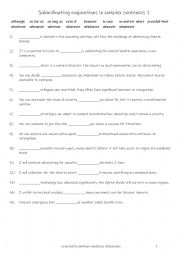
|
B1+-B2 15 subordinating conjunctions in complex sentences part 1
Using subordinating conjunctions allows students to express more detailed and nuanced thoughts. For instance, "although" and "even if" help convey contrast or condition in sophisticated ways. They add variety to writing and speaking, moving beyond simple sentences and making communication more engaging and dynamic. For example, "whenever" or "whoev...
Level: intermediate
Age: 10-100
Type:
Downloads: 112
|

|
B1+-B2 25 reporting verbs
Reporting verbs help clarify how something is said (e.g., said, claimed, suggested), making the intent of the speaker clearer. Learning reporting verbs enhances communication by providing clarity, variety, and nuance, improving writing quality and comprehension, aiding in quoting and paraphrasing, fostering critical thinking, boosting fluency, incr...
Level: intermediate
Age: 9-100
Type:
Downloads: 101
|
|
|
|
|












